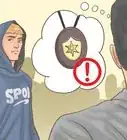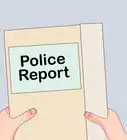This article was co-authored by Clinton M. Sandvick, JD, PhD. Clinton M. Sandvick worked as a civil litigator in California for over 7 years. He received his JD from the University of Wisconsin-Madison in 1998 and his PhD in American History from the University of Oregon in 2013.
wikiHow marks an article as reader-approved once it receives enough positive feedback. In this case, 82% of readers who voted found the article helpful, earning it our reader-approved status.
This article has been viewed 119,347 times.
Police officers are given an immense amount of power and they play an integral role in maintaining the public's safety. Due to this power, a lot of people try and impersonate police officers. Police impersonators are dangerous and are often attempting to commit violent crimes. There are many circumstances in daily life where you will have the potential to interact with police, and in all of those circumstances, impersonators loom. Whether you are in your home, in your car, or online, you can spot police impersonators if you know what to look for.
Steps
Understanding Police Impersonation
-
1Understand why people impersonate police officers. Police officers are afforded a lot of power in order to enforce the laws of a particular state. With that power comes the ability to wear a uniform, carry a firearm, and arrest people should the situation arise. Criminals, who could utilize this perceived power to inflict harm, are always looking for a way to commit crimes without getting caught. Police impersonators often do what they do in order to commit violent crimes, including murder, rape, and burglary.
-
2Know how people impersonate police officers. Impersonating a police officer is actually a lot easier than it may seem. With the advent of the internet, anything that can be sold will be.[1] A lot of authentic looking police gear can be found on auction sites, which often allow the sale of police identifiers so long as there is a profit.[2] One study found that a simple online search produced police badges for sale from almost every state, city, and county in the United States.[3]
- Impersonators often buy uniforms, badges, utility belts, and vehicle accessories (e.g., lights and decals).
- People can even impersonate officers by simply introducing themselves as someone with police authority.
Advertisement -
3Identify who is at risk of being victimized. Police impersonators are often looking for anyone who seems exposed and easily fooled. This means that younger people, as well as the elderly, are most at risk to be victimized by police impersonators. With that said, criminals often commit crimes of opportunity, meaning they may impersonate a police officer in order to commit another crime against anyone that presents an easy target in the moment.
-
4Recognize the illegality of police impersonation. Impersonating a police officer is a crime in and of itself. Most laws prohibit a person from identifying themselves as an officer, producing a badge of authority, wearing a uniform with the intent to impersonate an officer, and creating a vehicle that looks like a police vehicle.
- However, dressing up in a police costume for fun, for example during Halloween or for acting purposes, is not prohibited by law.
Spotting Police Impersonators at Your Home
-
1Listen for the person's knock and announce. When a police officer comes to your door, they are usually required to knock and announce their presence.[4] [5] In addition to knocking, police are supposed to state their purpose for being there and announce that they are officers of the law.[6]
- Impersonators may or may not know about these rules, and therefore an impersonator may not knock and announce themselves as an officer. If someone in a police uniform knocks on your door and does not state their purpose for being there, do not open the door.
-
2Resist the urge to open the door. Even if someone in uniform knocks and announces their presence, do not immediately open the door. Ask the person outside to describe the purpose of their visit, and start a dialogue without opening the door. If it is a real officer, they should have no problem explaining their visit and having a conversation through the door until you can verify their identity.
- If the person at your door is an impersonator, once you open the door, the barrier between yourself and the impersonator will be gone. Once this happens, the impersonator can get inside where they may want to commit a crime.
-
3Look at the person's uniform. While talking to the person through the door, examine the uniform they are wearing.[7]
- The clothes themselves should be clean and unwrinkled. Uniforms with stains and uniforms that do not fit properly are good indications of a fake. Also, look for a hat, which is a requirement for police officers in many, but not all, areas.
- The uniform will always include a badge, name tag, and service tags.[8] The badge will be made out of metal and will never be plastic or flimsy. Service tags indicate the years of service an officer has had on the force.[9]
- Look for a utility belt with all of the tools of the trade.[10] These tools include a flashlight, firearm, handcuffs, taser, bullet magazines, and pepper spray. The utility belt itself is usually made of woven leather.
- All officers will carry a radio, so be sure the person you see has one.
- Try to identify the officer's citation pad.
-
4Ask the person to show their badge and other identification. Once you have examined what the person is wearing, or while you are doing so, ask to see the officer's identification. A trained officer should comply with this request promptly and professionally.[11] The officer should have a badge, identification card, and even a photo ID.[12]
- While an impersonator may be able to fake a badge, it is much more difficult to fake a photo ID and police identification card. If the person cannot show you these things, they may be impersonating an officer.
-
5Call the police if you have any doubts. If you have any doubt after examining and speaking with the officer, call the police.[13] Dispatchers will know whether an officer has been sent to your home and if they are currently there.[14] The dispatcher will send out a real officer if there is any doubt as to what is unfolding.
- Real officers should never be upset if you choose to call the police to verify their identity. This verification process is easy and pain free for the officer, so they should be happy to let you make the phone call. If anyone asks that you not call the police, they may be impersonating an officer.
Identifying Police Impersonators During Traffic Stops
-
1Know where you are at all times. While you are driving, understand where you are. This includes what city you are in, what road you are driving on, and what direction you are going.[15] If you get pulled over by a vehicle that looks like a police vehicle, you can use the information about your location throughout the rest of your interaction.
- If you have to call the police, knowing where you are located will help you explain the situation to the dispatcher.
- If you are looking at the person's vehicle, knowing where you are will help you identify the markings on the vehicle in order to ensure they match your location. For example, if you get pulled over in Los Angeles, you want to make sure you aren't being pulled over by a New York police car.
-
2Listen for the vehicle's siren. When an officer begins the process of pulling you over, many departments, but not all, require they turn on an audible siren.[16] Listen for the siren and determine whether it sounds legitimate. While different police forces may use different sounds, try to familiarize yourself with those sounds so you can spot improper ones.
- Police cars, fire trucks, and ambulances all use different sounding sirens. Impersonators may not know this and may accidentally install the wrong siren.
-
3Look at the person's vehicle. One of the easiest ways to spot a police impersonator is to examine their vehicle.[17]
- If it looks older or is not running in good condition, it may not be a real police car.[18]
- Look for the reflective decals on the sides and the hood of the car.[19] These decals should clearly identify the vehicle as a police vehicle and should include car numbers, a police shield, and police department identifiers.
- Identify the warning lights on the police car. Most police cars are equipped with a number of lights that flash colors to warn people of their presence. Police lights are often red and blue.[20] Beware of single white lights or green and yellow lights behind the grill.[21]
- Read the officer's license plate. Real police units utilize specialized license plates that identify the vehicle as a police vehicle.
-
4Turn on your hazard lights. Before you pull over, especially if you are in a dark area, turn on your hazard lights to inform the vehicle attempting to pull you over that you see them.[22] Trained officers know this means you are acknowledging their presence and that you are not trying to run from them.[23]
-
5Pull over in a well-lit and populated area. With your hazard lights still on, drive until you reach a will lit and populated area.[24] Pulling over where people are nearby can help disincentivize a police impersonator from committing a crime against you. Also, if you are in a well lit area, you will be able to examine the person and their actions better.
- If you do this, a police impersonator will often drive right by you because they will not want to risk getting caught.
-
6Keep your doors locked and only roll down your window enough to communicate. Once you pull over, do not open your door or get out of the car.[25] Stay in the vehicle with your doors locked.[26] Only roll your window down enough to speak to the person outside your vehicle.[27]
- If the person puling you over is an impersonator, you do not want to let them gain access to you or your vehicle, which is why you should not open your door or roll your window down all the way.
-
7Look at the person's uniform. While talking to the person through the window, examine the uniform they are wearing.[28]
- The clothes themselves should be clean and unwrinkled. Uniforms with stains and uniforms that do not fit properly are good indications of a fake. Also, look for a hat, which is a requirement for police officers.
- The uniform will always include a badge, name tag, and service tags.[29] The badge will be made out of metal and will never be plastic or flimsy. Service tags indicate the years of service an officer has had on the force.[30]
- Look for a utility belt with all of the tools of the trade.[31] These tools include a flashlight, firearm, handcuffs, taser, bullet magazines, and pepper spray. The utility belt itself is usually made of woven leather.
- All officers will carry a radio, so be sure the person you see has one.
- Try to identify the officer's citation pad.
-
8Ask for the person's badge number and other identification. Once you have examined what the person is wearing, or while you are doing so, ask to see the officer's identification. A trained officer should comply with this request promptly and professionally.[32] The officer should have a badge, identification card, and even a photo ID.[33]
- While an impersonator may be able to fake a badge, it is much more difficult to fake a photo ID and police identification card. If the person cannot show you these things, they may be impersonating an officer.
-
9Call the police. If you have any doubt after examining and speaking with the officer, call the police.[34] Dispatchers will know whether an officer has been sent to your area and if they have actually pulled someone over.[35] The dispatcher will send out a real officer if there is any doubt as to what is unfolding.
- Real officers should never be upset if you choose to call the police to verify their identity. This verification process is easy and pain free for the officer, so they should be happy to let you make the phone call. If anyone asks that you not call the police, they may be impersonating an officer.
Recognizing Police Impersonators Online
-
1Understand when police use the internet. Police officers are now using the internet to aid in their duties. Police are using social media outlets to let citizens know about crimes in progress, to inform citizens of events, and to post pictures of suspects and wanted criminals.
-
2Spot vague references to the person's employer. If someone reaches out to you online claiming they are a police officer, you should immediately be concerned. While police often use social media, they are usually using it to reach the masses and not one individual person. When someone reaches out to you, look at their profile and analyze their personal information.[36] A real police officer will have no problem stating who they work for and where they work. On the other hand, an impersonator will often try to hide their true identity. Therefore, an impersonator may hide their employment credentials, which should be a red flag for you.
-
3Look for out of place photographs on the person's social media page. An official police or police officer internet page will often include the official's head shot or the official insignia of the police force. Profile pictures depicting eagles, flags, or other symbols instead of the person's photo should raise alarms.[37] If photo albums do not contain any real pictures, it might be the profile of an impersonator.[38]
-
4Ask for credentials. When you start conversing online with someone claiming to be a police officer, ask for their credentials. A real officer will have no problem providing you with a badge number, name, identification number, and information about the precinct they work for. Once you receive this information, call the police station and ask to verify what you have been told.
- If the person you are talking to is unable to provide you with their credentials, you should cease talking to them and contact the police.
Warnings
- Tourists can be victims crime through people impersonating police officers.⧼thumbs_response⧽
- Elderly and vulnerable people can be fooled by unscrupulous people impersonating police officers.⧼thumbs_response⧽
References
- ↑ http://abcnews.go.com/GMA/story?id=3361636
- ↑ http://abcnews.go.com/GMA/story?id=3361636
- ↑ http://abcnews.go.com/GMA/story?id=3361636
- ↑ http://www.nolo.com/legal-encyclopedia/warrants-the-knock-notice-rule.html
- ↑ http://blogs.findlaw.com/blotter/2013/07/real-police-or-impersonator-heres-how-to-tell.html
- ↑ http://www.nolo.com/legal-encyclopedia/warrants-the-knock-notice-rule.html
- ↑ http://blogs.findlaw.com/blotter/2013/07/real-police-or-impersonator-heres-how-to-tell.html
- ↑ http://www.ehow.com/how_2088975_spot-fake-policeman.html
- ↑ http://www.ehow.com/how_2088975_spot-fake-policeman.html
- ↑ http://blogs.findlaw.com/blotter/2013/07/real-police-or-impersonator-heres-how-to-tell.html
- ↑ http://abcnews.go.com/GMA/story?id=3361636
- ↑ http://abcnews.go.com/GMA/story?id=3361636
- ↑ http://abcnews.go.com/GMA/story?id=3361636
- ↑ http://abcnews.go.com/GMA/story?id=3361636
- ↑ http://abcnews.go.com/GMA/story?id=3361636
- ↑ http://blogs.findlaw.com/blotter/2013/07/real-police-or-impersonator-heres-how-to-tell.html
- ↑ http://blogs.findlaw.com/blotter/2013/07/real-police-or-impersonator-heres-how-to-tell.html
- ↑ http://blogs.findlaw.com/blotter/2013/07/real-police-or-impersonator-heres-how-to-tell.html
- ↑ http://blogs.findlaw.com/blotter/2013/07/real-police-or-impersonator-heres-how-to-tell.html
- ↑ http://www.ehow.com/how_2088975_spot-fake-policeman.html
- ↑ http://www.ehow.com/how_2088975_spot-fake-policeman.html
- ↑ http://abcnews.go.com/GMA/story?id=3361636
- ↑ http://abcnews.go.com/GMA/story?id=3361636
- ↑ http://abcnews.go.com/GMA/story?id=3361636
- ↑ http://abcnews.go.com/GMA/story?id=3361636
- ↑ http://abcnews.go.com/GMA/story?id=3361636
- ↑ http://abcnews.go.com/GMA/story?id=3361636
- ↑ http://blogs.findlaw.com/blotter/2013/07/real-police-or-impersonator-heres-how-to-tell.html
- ↑ http://www.ehow.com/how_2088975_spot-fake-policeman.html
- ↑ http://www.ehow.com/how_2088975_spot-fake-policeman.html
- ↑ http://blogs.findlaw.com/blotter/2013/07/real-police-or-impersonator-heres-how-to-tell.html
- ↑ http://abcnews.go.com/GMA/story?id=3361636
- ↑ http://abcnews.go.com/GMA/story?id=3361636
- ↑ http://abcnews.go.com/GMA/story?id=3361636
- ↑ http://abcnews.go.com/GMA/story?id=3361636
- ↑ http://blogs.findlaw.com/blotter/2013/07/real-police-or-impersonator-heres-how-to-tell.html
- ↑ http://blogs.findlaw.com/blotter/2013/07/real-police-or-impersonator-heres-how-to-tell.html
- ↑ http://blogs.findlaw.com/blotter/2013/07/real-police-or-impersonator-heres-how-to-tell.html
About This Article
If you think someone might be impersonating a police officer, there are a few things you can look for that will give them away. If you’re at home, ask the person what their reason for being there is. A real police officer will announce themselves as an officer and tell you why they’re there. Ask them to see their badge so you can see if it’s made of real metal and looks official. If they won’t state their business or show you their badge, don’t open the door. In a traffic stop, look at the vehicle and the lights to see if they’re properly mounted to the car. If the car looks like an outdated model without reflective decals, it could be fake. If you ever feel concerned or unsafe, call your local police. For tips about how to recognize police impersonators online, keep reading.
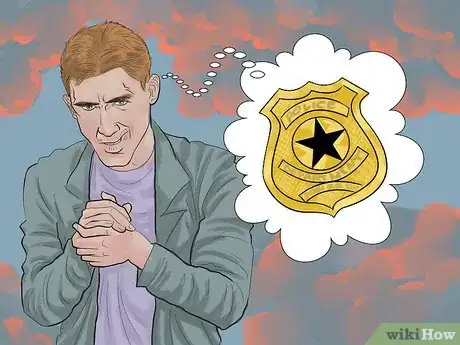
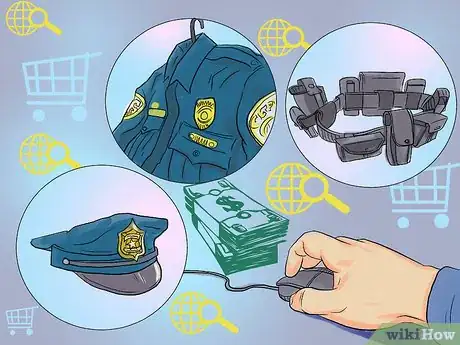

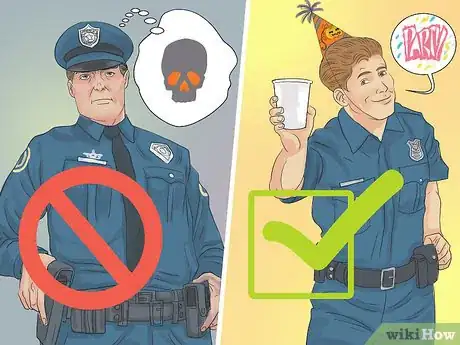
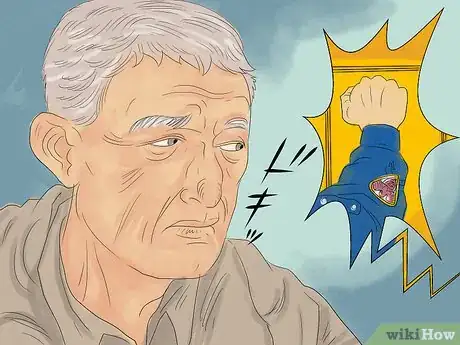

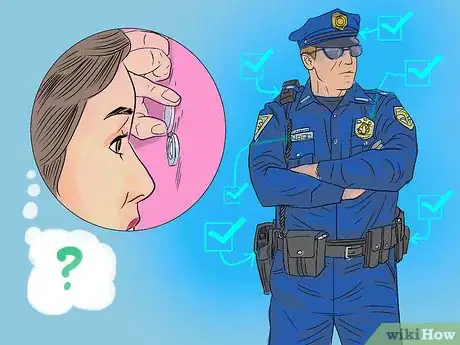
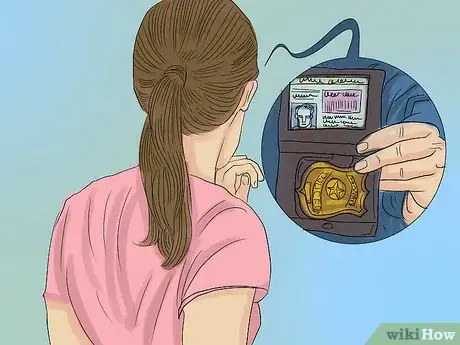
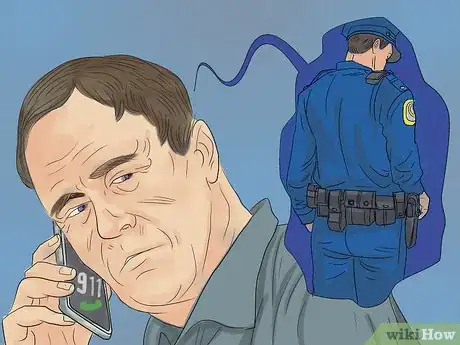
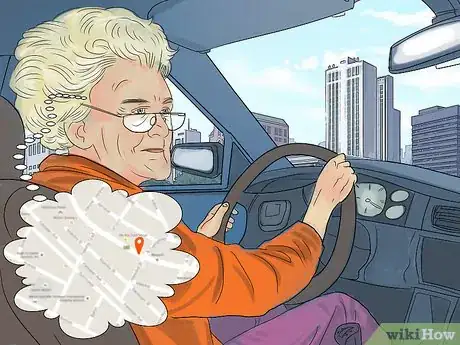
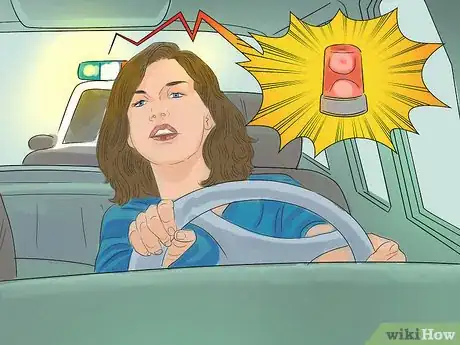

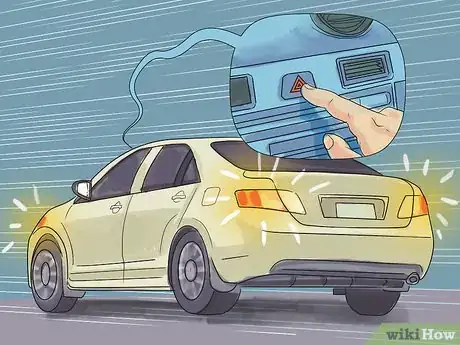

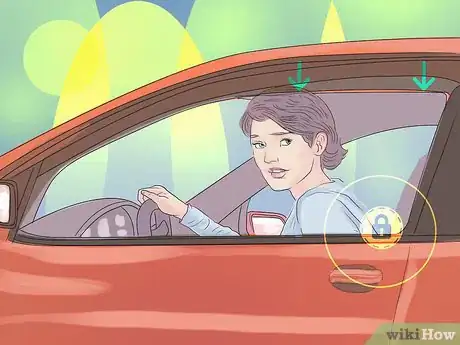

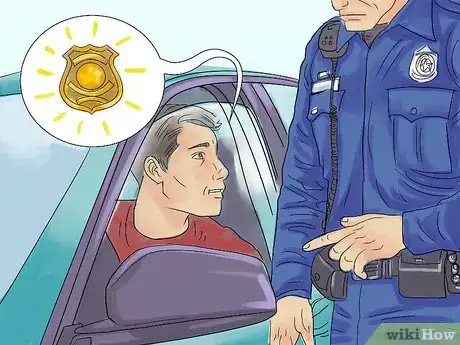
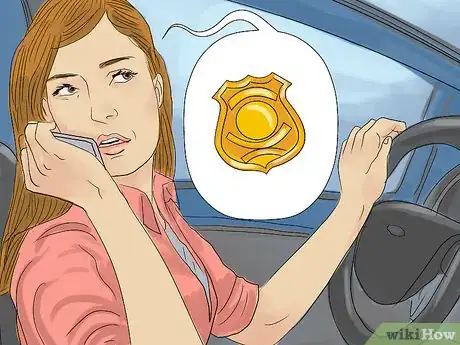
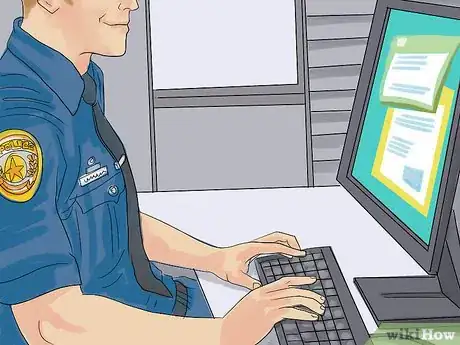

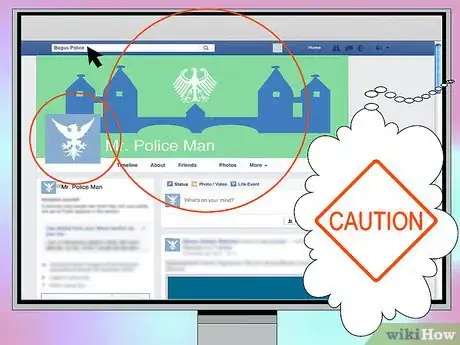

-Step-12.webp)
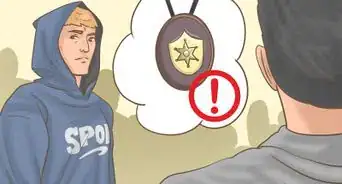




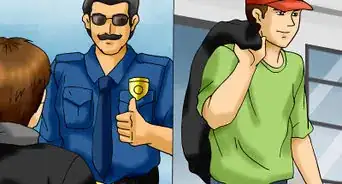




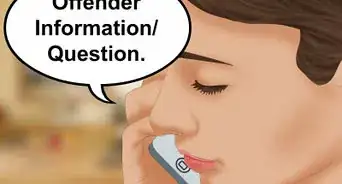









-Step-12.webp)
